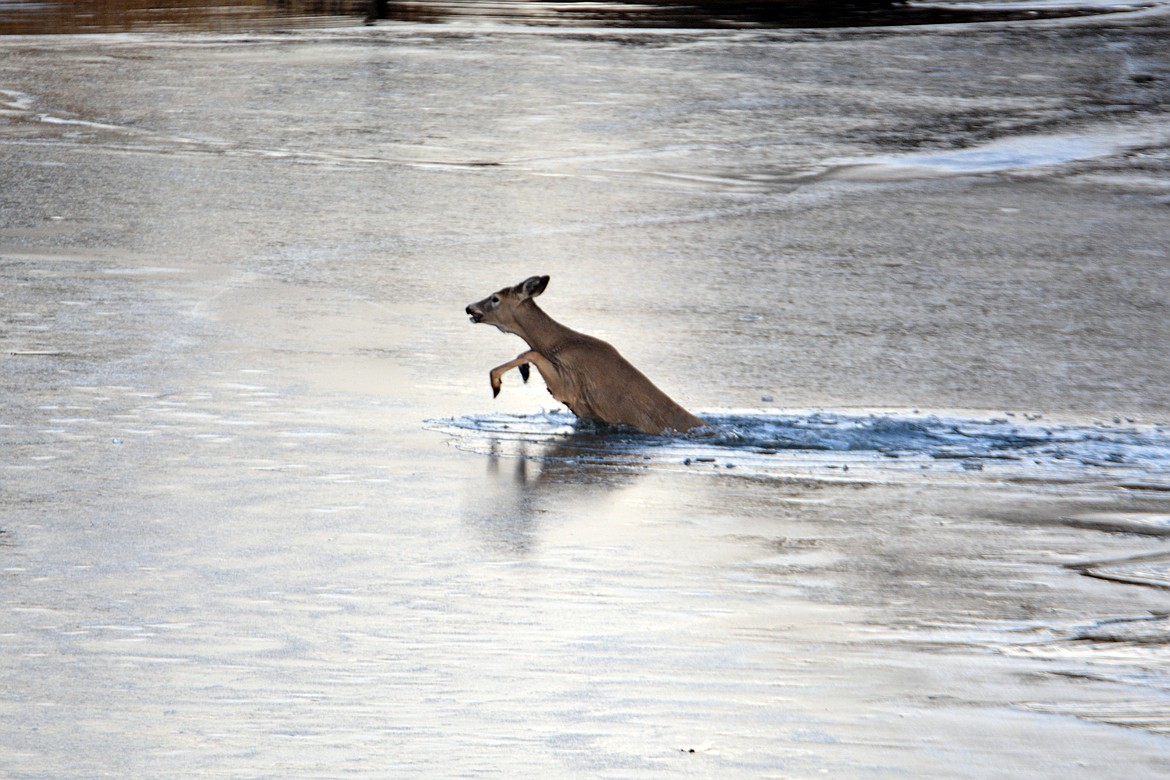Wildlife adapts to the rigors of winter
“The hard soil and four months of snow make the inhabitants of the northern temperate zone Wiser and abler than his fellow who enjoys the fixed smile of the tropics.” Ralph Waldo Emerson
With things a little out of whack this winter, we can all count on one thing — snow!
It’s cold outside! When it gets cold what do you do? I put on a warm sweater, stay inside and have a hot cup of coffee! Animals can’t put on a sweater, so what do they do in winter? Winter is cold and there is less food around.
Winter is the most stressful time of year for Boundary County’s wildlife. Animals have three basic strategies for survival in winter — they can hibernate, migrate, or tough it out. The key hardships are lack of food and cold temperatures; however, lack of food is generally considered to be the primary factor that causes many species to migrate or hibernate.
Animals that adapt to the cold weather often change their appearance. They grow thicker fur or more feathers and sometimes change color. Some animals change color to camouflage themselves against snow, like a snowshoe hare. These animals can find food in winter, even though there isn’t much food around.
In deep snow, deer and elk follow in each other’s footsteps to save energy. Moose have special joints that allow them to swing their legs over snow rather than push through snow as elk do.
The winter conditions have been most difficult on fawns. This time of year, most fawns are about nine months old and about three-quarters of their adult size. Because of their youth and their inability to reach into trees above branches that have already been picked over, they will be the first to struggle.
For a lot of the large animals, their metabolism slows down in the winter. They don’t need to eat as much. The key month is March, when their metabolism speeds up again. If it’s still very cold, and the ground is still covered with snow, that’s when they are more vulnerable.
Sometimes in the winter the concern is greater for the snow depth than the extreme cold, because animals are having trouble scraping the ground to forage, and the snow isn’t melting. But now the concern is whether the wildlife can find the food sources on the ground or can reach the food on tree branches. If they can’t find food in areas where they tend to seek shelter from the cold, such as a tight collection of trees, they will be forced to browse further from the shelter, which makes them more susceptible to the cold.
Turkeys, which are less adapted for the heavy snowfall, live off of berries and grains. Pheasant have a similar diet and depend upon a good habitat with grasses or grains available. As it continues to snow this winter, more and more of both birds are being seen in backyards and farm houses as they are looking for seeds and grains in an attempt to survive the winter.
Enjoy Boundary County and its winter wonderland.



